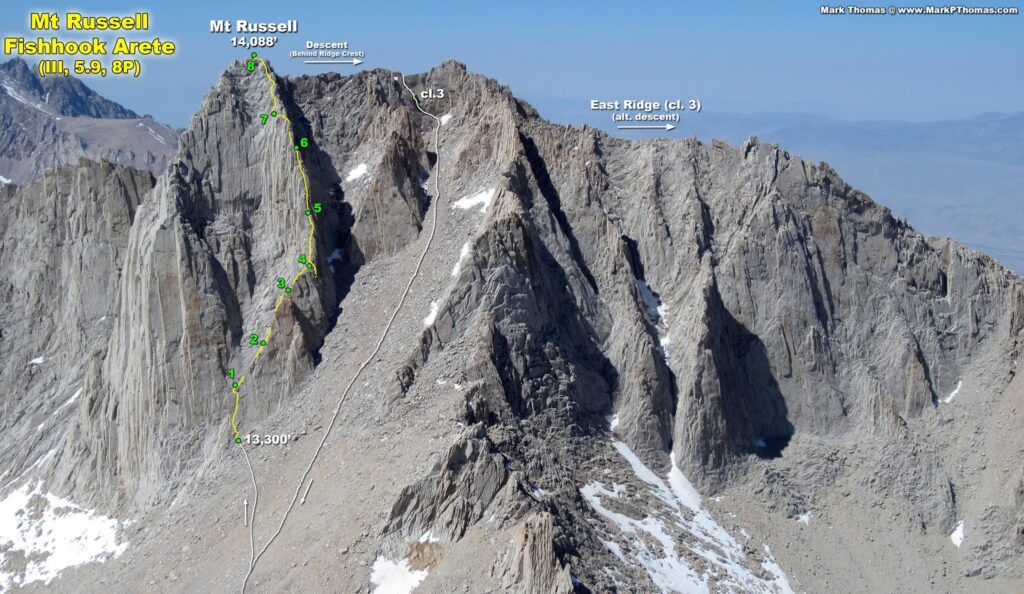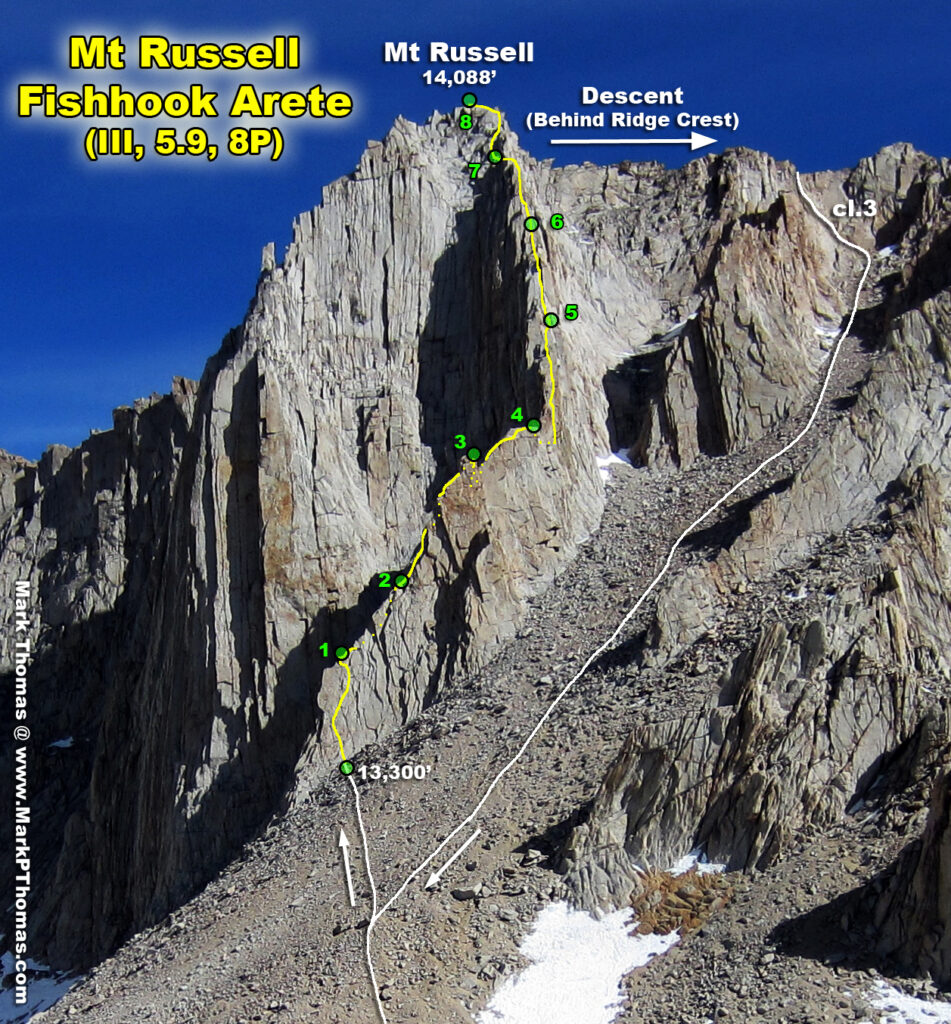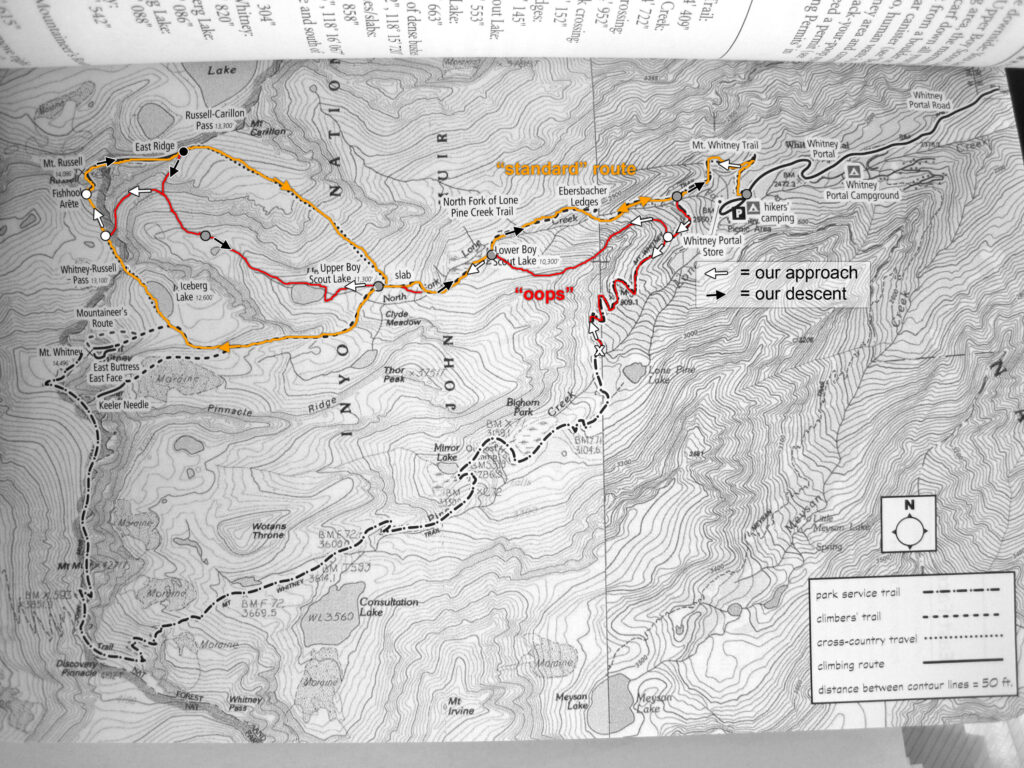Following a sharp crescent-shaped spine on the southern aspect of Mt. Russell,
Fishhook Arête is one of the most aesthetic routes in the High Sierra. Nearly the entire length of the 8-pitch route is exposed and on perfect golden granite. The climb is easily divided into two distinct arêtes separated by a notch. The lower arête is thin, exhilarating, and diagonals up mostly moderate terrain with a few stout 5.9 sections. The upper arête ascends steep rock that gradually lessens in angle and has incredible belay ledges every 50 feet. Plus, the route tops out on a 14,000+ foot summit. It is no surprise that
Fishhook Arête is named as one of the 100 best Sierra alpine climbs in John Moynier and Claude Fiddler's "Sierra Classics."
So of course
Fishhook Arête was high on the tick list when I joined friends Sarah, Chad, and Dan on a climbing road trip to the High Sierra in August 2013. But when we arrived at the Visitor Center in Lone Pine the day before we wanted to climb Russell, we were dismayed to discover that we needed a permit to climb the route (any hike or climb involving the Whitney Portal trailhead requires a permit), and that permits for that area are almost always all reserved a few months before the summer even begins. However, we were told that there was a chance that some permits would go unclaimed, but we would have to return the next day and join a lottery with the daily crowd also wanting permits. We decided that the opportunity to climb
Fishhook Arête was worth the risk of a totally wasted sunny day. So we showed up at the Visitor Center at 8am the next morning. No permits were available. We got worried. We were told to come back at 11am and check to see if any overnight permits had gone unclaimed. At 11am, four overnight permits were unclaimed. We got excited. But then we drew the #2 position in the lottery and the overnight permits went to #1. We got worried again. We were told to come back at 2pm and check to see if any day-use permits had gone unclaimed. At 2pm, twenty day-use permits were unclaimed. We did a head count of all the others in the lottery for permits. Fortunately, there were just less than twenty of us. Whew! Climb on!
The following page provides a trip report for our climb of
Fishhook Arête. It was a super fun day in the mountains, and we all agreed that
Fishhook Arête is indeed deserving of its status as a Sierra classic.
Update (Aug 2015): The rock on Russell is some of the best alpine granite I've climbed, and over the next couple of seasons I returned to climb several other routes on Russell, including
Mithral Dihedral (5.9+, 700') (July '15),
Western Front (5.10+, 900') (July '15), and
East Ridge (3rd, 800') (as a downclimb, Aug'13 and July '15),
Star Trekkin' (5.10-, 700') (Aug '15), and
Bloody Corner (5.10+, 800') (Aug '15) (click links for trip report). All are excellent routes.




























